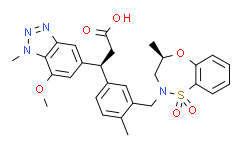
购物车0
产品总数:60957


| 商品编号 | 规格 | 价格 | 会员价 | 是否有货 | 数量 |
|---|---|---|---|---|---|
| PL11820-1mg | 1mg | ¥2349.09 | 请登录 |
|
|
| PL11820-5mg | 5mg | ¥7294.55 | 请登录 |
|
|
| PL11820-10mg | 10mg | ¥12240.00 | 请登录 |
|
|
| PL11820-25mg | 25mg | ¥24603.64 | 请登录 |
|
|
| PL11820-50mg | 50mg | 询价 | 询价 |
|
|
| PL11820-100mg | 100mg | 询价 | 询价 |
|
|
| PL11820-10mM*1mLinDMSO | 10mM*1mLinDMSO | ¥8840.00 | 请登录 |
|
 扫码关注公众号
扫码关注公众号